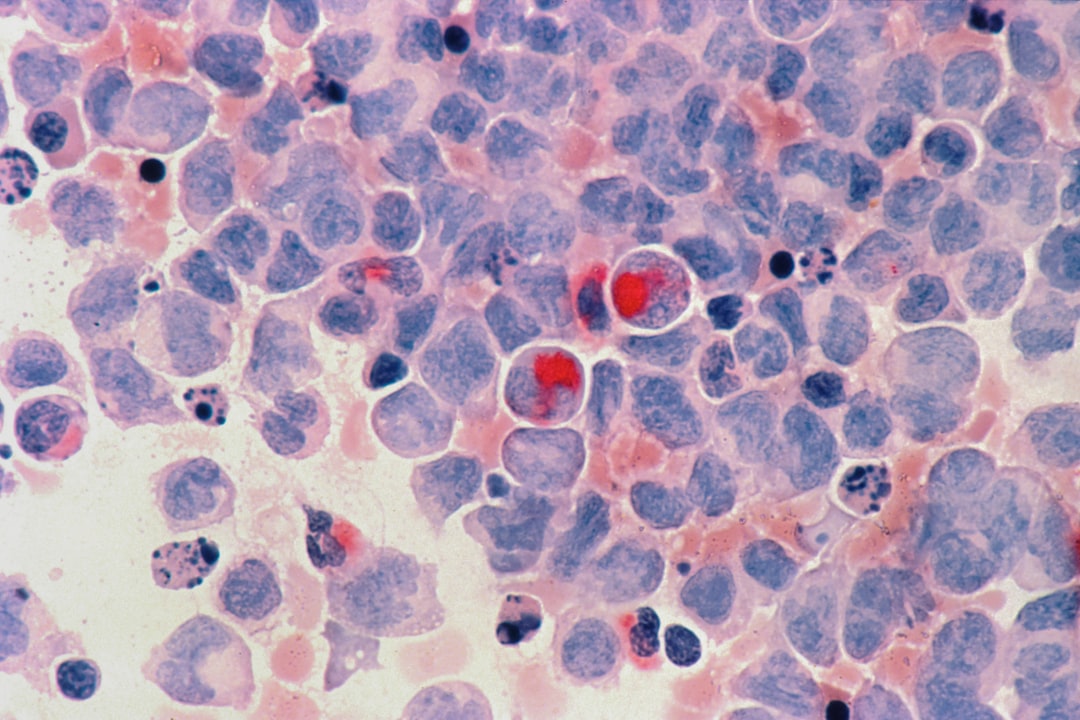What is it about?
Lysosomal photosensitizers have been used in photodynamic therapy. The combination of such photosensitizers and light causes lysosomal photodamage, inducing cell death. Lysosomal disruption can lead to apoptosis but its signaling pathways remain to be elucidated. In this study, N-aspartyl chlorin e6 (NPe6), an effective photosensitizer that preferentially accumulates in lysosomes, was used to study the mechanism of apoptosis caused by lysosomal photodamage. Apoptosis in living human lung adenocarcinoma cells (ASTC-a-1) after NPe6–photodynamic treatment (NPe6–PDT) was studied using real-time single-cell analysis. Our results demonstrated that NPe6–PDT induced rapid generation of reactive oxygen species (ROS). The photodynamically produced ROS caused a rapid destruction of lysosomes, leading to release of cathepsins, and the ROS scavengers vitamin C and NAC prevent the effects. Then the following spatiotemporal sequence of cellular events was observed during cell apoptosis: Bcl-2-associated X protein (Bax) activation, cytochrome c release, and caspase-9/-3 activation. Importantly, the activation of Bax proved to be a crucial event in this apoptotic machinery, because suppressing the endogenous Bax using siRNA could significantly inhibit cytochrome c release and caspase-9/-3 activation and protect the cell from death. In conclusion, this study demonstrates that PDT with lysosomal photosensitizer induces Bax activation and subsequently initiates the mitochondrial apoptotic pathway.
Featured Image
Why is it important?
NPe6–PDT has been shown to be effective in several experimental animal models. Previous studies have shown that NPe6 preferentially accumulates in lysosomes and causes lysosomal disruption after laser irradiation, resulting in cytochrome c release and activation of caspases. However, it is not clear how cellular signaling from lysosomal disruption leads to apoptosis. Previous studies suggested that Bid may be involved in apoptosis induced by lysosomal photodamage. Results obtained from some other experimental models suggested that lysosomal proteases can directly activate caspases [29,30]. However, our observations are not consistent with a model entailing direct lysosomal protease activation of procaspases. Herein, for the first time, we found that PDT with the lysosomal photosensitizer NPe6 induces Bax activation and subsequently initiates the mitochondrial apoptotic pathway, resulting in caspase activation and cell death. The findings contribute to the understanding of the mechanisms involved in proapoptotic signaling mediated by lysosomal photosensitizer-based PDT.
Read the Original
This page is a summary of: Cell death via mitochondrial apoptotic pathway due to activation of Bax by lysosomal photodamage, Free Radical Biology and Medicine, July 2011, Elsevier,
DOI: 10.1016/j.freeradbiomed.2011.03.042.
You can read the full text:
Contributors
The following have contributed to this page










